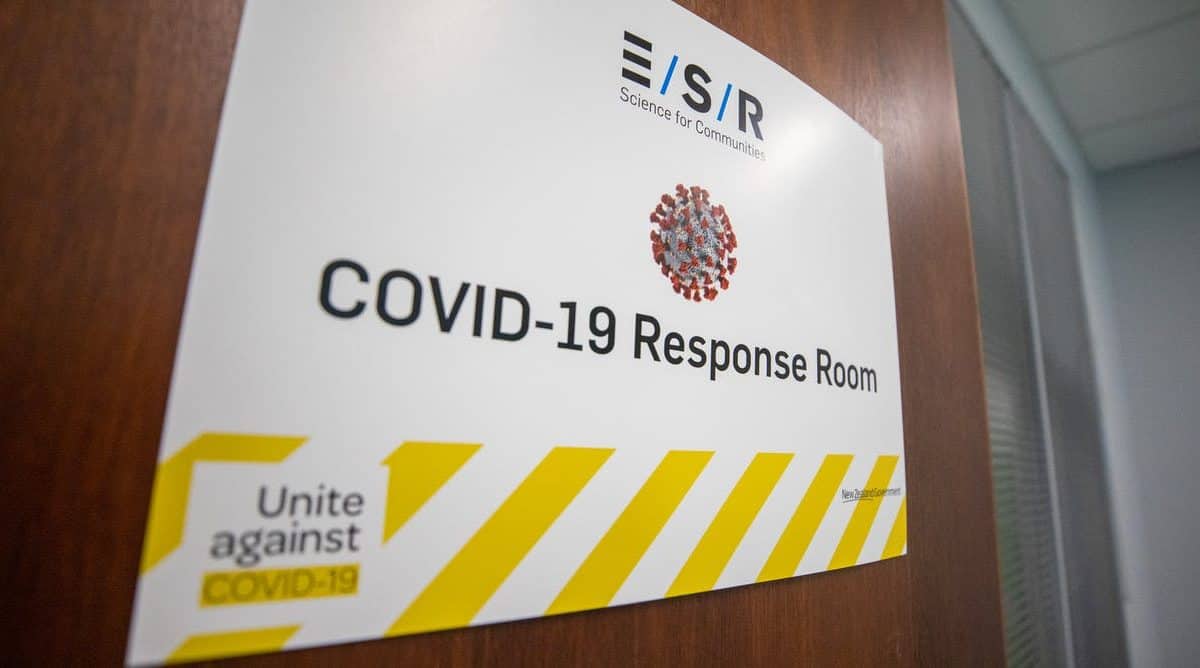When a COVID-19 case was found in Northland last Sunday, Aotearoa’s second-longest period with no detected community case came to an end.
ESR scientists worked late into Sunday night to obtain a whole genome sequence and reported Monday morning it was one of the “variants of concern” we have heard so much about since mid-December.
So far, close contacts of the infected woman have tested negative. But this is the ninth community incursion detected since August. With a makeshift managed isolation and quarantine (MIQ) system using hotels in the country’s biggest city, rather than purpose-built facilities, further community cases have been expected.
And the increasing prevalence of the new variants worldwide meant it was inevitable we’d eventually see one in the community. Unless there are major improvements at the border, we can expect more cases.

How concerned should we be?
Briefly, there are three variants that all share a common mutation known as 501Y in the region of the genome that codes for the spike protein — the part of the virus that binds to our cells and establishes infection.
The three variants are most simply known as 501Y-V1 (or B.1.1.7, first detected in the UK), 501Y-V2 (B.1.351, detected in South Africa) and 501Y-V3 (P1 or B.1.1.28.1, first detected in Brazil).
While the 501Y mutation has been seen multiple times in several countries, what makes these three variants of particular interest is that they are all accompanied by multiple other mutations that are not seen together elsewhere.
It is thought the combined effect of these mutations helps the virus spread more quickly and potentially helps it evade parts of our immune response. Very early and incomplete evidence suggests they may pose a slightly greater risk of death than the original virus.
Risk of increased transmission
Trying to establish whether one variant spreads faster than any other is very difficult. A huge range of factors influence viral spread and there is a lot of random chance involved.
Before December, there was only evidence that one variant — with spike protein mutation 614G — might have a higher rate of transmission. This is now the dominant strain worldwide.
But it might have achieved its current dominance by simple luck as it spread to new and fertile grounds for transmission. Scientists spent much of the last year batting down suggestions that new mutations were changing the dynamics of the pandemic.
Reports from the UK of 501Y-V1, the first variant of concern, changed that. Here was a variant competing with many others in the same location — and it seemed to be growing much more quickly.
Winter plays a role
We can think of viral transmission as a tree, new infections being branches budding off and current cases the tips of those branches. If we see 100 branches, 50 of one variant and 50 of another, grow into 200 branches, we’d expect to end up with roughly 100 of each variant.
Whole genome sequences of viral cases sampled across the UK let researchers construct the family tree of the virus and watch it grow. What they observed was 501Y-V1 outgrowing other variants: the split was more like 115 501Y-V1 branches and 85 of the other type.
Of course, chance may also be involved here. The big factors that influence transmission are how we respond as a society through preventive measures. Seasonal influences are increasingly being recognised, too.
As the UK variant spread, cases rose as winter set in and students returned to education. Growth in case numbers was no surprise.
But the higher growth rate for 501Y-V1 has now been observed repeatedly. Estimates typically put it around 30-70% more transmissible.
Rapid growth has also been observed in 501Y-V2 in South Africa, and genetic similarities suggest 501Y-V3 may also share this trait.
The known unknowns
We should be cautious about transferring these numbers to other environments. The UK was at a fairly high alert level, which reduced the reproduction number (or R number — the average number of people each infected person is expected to infect) to about 0.9 for the standard strain.
The R number for 501Y-V1 was above 1, at around 1.2 to 1.5, hence the claim it was up to 70% worse. It is not yet clear, though, whether the effect is multiplicative (meaning we multiply the observed R number by 170%), or additive (we simply add the difference between the higher and lower R numbers to make the adjustment, so up to 0.6 based on the UK data).
If there was an undetected outbreak in New Zealand right now, given we have very few restrictions and it is summer, R for the standard virus might be around 2. A multiplicative effect of 70% would increase R to 3.4, while an additive effect would just add the same amount — 0.6 — seen in the restricted UK environment, putting R at 2.6.
The difference between 2, 2.6 and 3.4 may seem small. But after four weeks of spread starting from one case it could be the difference between 30, 120 and 450 new cases.
What can NZ do now?
As New Zealand moves into the cooler weather of autumn and winter, the background R number will creep up.
So far we have been somewhat lucky with the community cases detected since the first wave. With the notable exception of the Auckland outbreak in August, the index case has always been quickly identified, linked to the border, and has not been a super-spreader.
While many of the individual cases involved have done everything right in getting tested early, at some point our “dumb good luck” may run out, with a case triggering a super-spreading event.
It has been estimated that around 15-20% of cases are super-spreaders and these cause 70-90% of infections. Seeing one major outbreak from nine border incursions tallies with these estimates.
The most obvious and cheapest way to reduce the risk of a rapid outbreak would be to reduce the number of people returning from high-risk countries (though not necessarily the number of people overall).
We can also reduce the chance of super-spreading events by adding extra post-quarantine testing requirements and having those leaving quarantine severely limit their contacts for the first week in the community.
David Welch, Senior Lecturer
This article is republished from The Conversation under a Creative Commons license. Read the original article.












